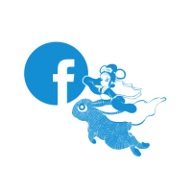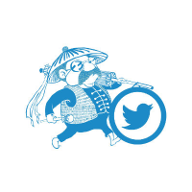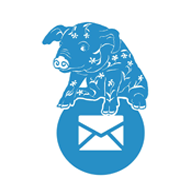









13 September 2018 by Lorna Snowflake
 As a child, I was in love with dragons. My favourite series of books followed a young man as he grew up to be a powerful Mage and, as a prize for all his efforts with magic and self-mastery, he finally learned how to communicate with them. They taught him no less than the secrets of existence.
As a child, I was in love with dragons. My favourite series of books followed a young man as he grew up to be a powerful Mage and, as a prize for all his efforts with magic and self-mastery, he finally learned how to communicate with them. They taught him no less than the secrets of existence.
This became my own childhood fantasy – that I would one day reveal my own magic powers and commune with dragons. Unfortunately, this never quite came true but I never stopped being inspired by their majesty and ancient wisdom.
Outside of these tales, however, the standard portrayal of a Western dragon is of an ancient and savage monster coiled up around its hoard of gold and jewels. Many famous knights in the tales of old have met their end facing this scaled and wicked foe. When I ask children at Snowflake Books events “Are dragons nasty or nice?” they pretty much always say “nasty”, despite more current children’s literature and TV giving dragons a much softer side. They appear to be a grand but terrible ancestor of the snake or crocodile.
It appears very difficult for dragons to shake off the traditional ‘George and the Dragon’ role they’ve always been placed in popular culture: on the wrong side of the age-old battle between good and evil. Yet, even in these stories, the dragon can also be portrayed as having a greater wisdom than humankind. Even where they are fierce, they are often also magical and unknowable (Lord of the Rings Smaug springs to mind here). Perhaps what is traditionally portrayed is more man’s own sense of domination over the animal world and a distinct lack of empathy with creature-kind. Despite the frequent use of the dragon as a traditional heraldic symbol, it is arguably a rather two-dimensional focus on their ability to smash foes in a fight. I have always felt that dragons were misrepresented in this way and wondered where to find inspiration for my storytelling so I could work towards an improved reputation.
Upon first encountering Chinese dragons, I felt like this majestic and mythical creature was given the symbolic respect it deserved. I bought The Nine Sons of the Dragon at a community fair and in its pages, found a very different set of creatures to the objects of my childhood fantasies. What I found fascinating was the prominence of their symbolism in traditional Chinese culture. Unlike their Western counterparts, Chinese dragons take different forms: serpent, snail, turtle and even a tiger. Each has a distinct symbolic role in assisting humanity and deities alike. Their images can still be found covering traditional architecture: protecting waterways, making bells more sonorous and enjoying smoking on incense burners. There are also all manner of sayings and proverbs about them in use in modern Mandarin.
What’s more, when I read into the matter further, I discovered that Chinese dragons were hailed as gods in some ancient Asian cultures. This is never an accolade afforded to an English dragon, despite my lifelong feeling that this was what they had truly deserved.
Despite the contrasts between the Eastern and the Western dragons, I can, of course, say that there is a place in my heart for the dragons that I first encountered in my childhood. They command a majesty, unlike another beast that has been imagined within fantasy, as a result of their coupled strength and otherworldly wisdom. I can now also happily say that they’ve been joined by their Eastern brothers and sisters in my mind. I have a much broader imaginative canvas to paint from when I tell my own dragon stories in the future. I hope that I can contribute even a small amount to raising the imaginary profile of British dragons so they get the acknowledgement I believe they are long overdue.
